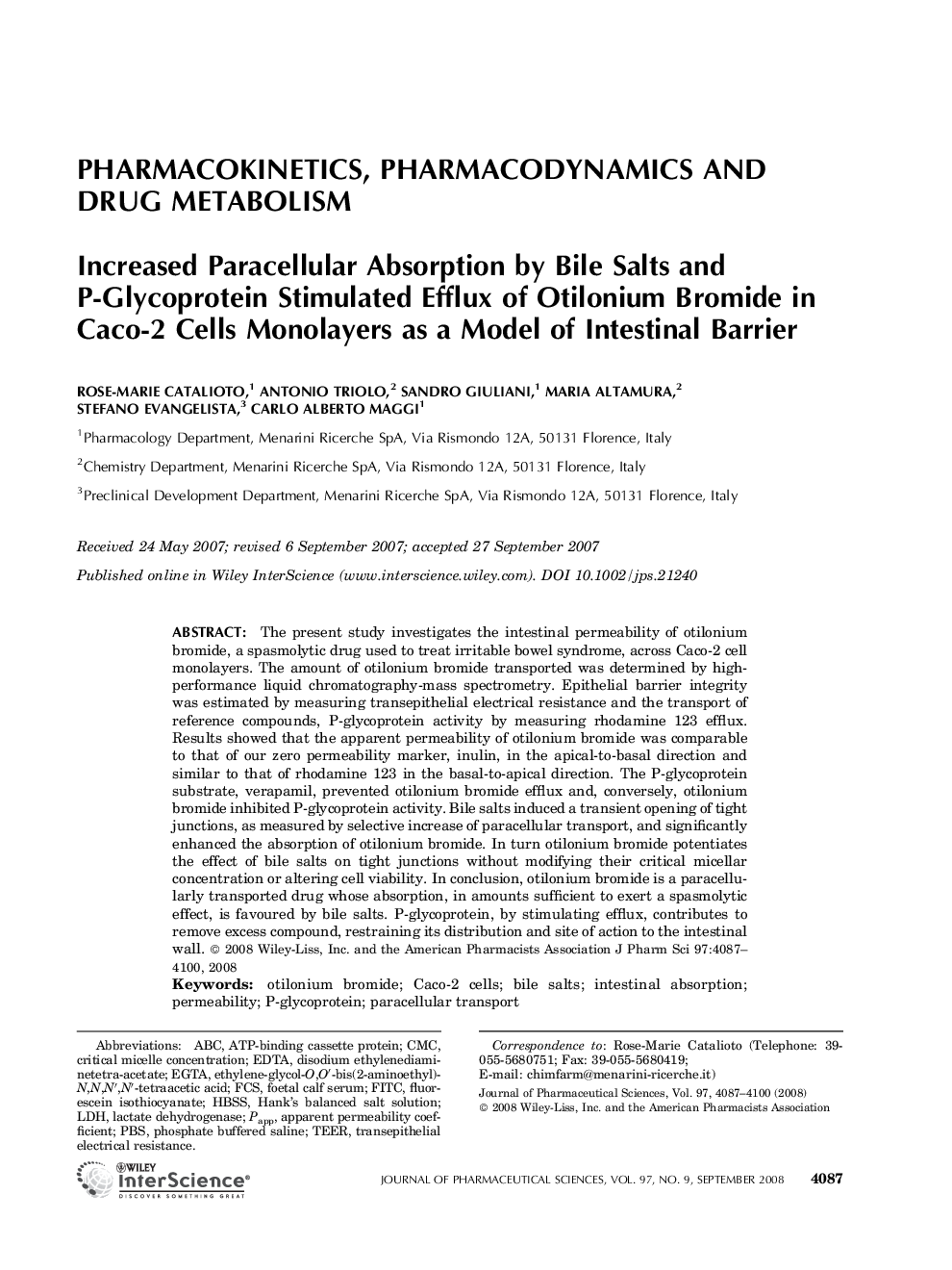| Article ID | Journal | Published Year | Pages | File Type |
|---|---|---|---|---|
| 2487279 | Journal of Pharmaceutical Sciences | 2008 | 14 Pages |
Abstract
The present study investigates the intestinal permeability of otilonium bromide, a spasmolytic drug used to treat irritable bowel syndrome, across Caco-2 cell monolayers. The amount of otilonium bromide transported was determined by high-performance liquid chromatography-mass spectrometry. Epithelial barrier integrity was estimated by measuring transepithelial electrical resistance and the transport of reference compounds, P-glycoprotein activity by measuring rhodamine 123 efflux. Results showed that the apparent permeability of otilonium bromide was comparable to that of our zero permeability marker, inulin, in the apical-to-basal direction and similar to that of rhodamine 123 in the basal-to-apical direction. The P-glycoprotein substrate, verapamil, prevented otilonium bromide efflux and, conversely, otilonium bromide inhibited P-glycoprotein activity. Bile salts induced a transient opening of tight junctions, as measured by selective increase of paracellular transport, and significantly enhanced the absorption of otilonium bromide. In turn otilonium bromide potentiates the effect of bile salts on tight junctions without modifying their critical micellar concentration or altering cell viability. In conclusion, otilonium bromide is a paracellularly transported drug whose absorption, in amounts sufficient to exert a spasmolytic effect, is favoured by bile salts. P-glycoprotein, by stimulating efflux, contributes to remove excess compound, restraining its distribution and site of action to the intestinal wall.
Keywords
Papp, apparent permeability coefficientOtilonium bromideCMC, critical micelle concentrationFCS, foetal calf serumHBSS, Hank's Balanced Salt SolutionP-glycoproteinTEER, transepithelial electrical resistanceIntestinal absorptionParacellular transportCaco-2 cellsFITC, fluorescein isothiocyanateLDH, lactate dehydrogenasePBS, phosphate buffered salinePermeabilityBile salts
Related Topics
Health Sciences
Pharmacology, Toxicology and Pharmaceutical Science
Drug Discovery
Authors
Rose-Marie Catalioto, Antonio Triolo, Sandro Giuliani, Maria Altamura, Stefano Evangelista, Carlo Alberto Maggi,
